General Information
Benchmark Instructional Guide
Teacher provides geoboards to students and displays a shape for the students to copy. The teacher specifies the number of small shapes they should use to decompose the large shape. Specify whether the large shapes should be congruent or just the same type.Connecting Benchmarks/Horizontal Alignment
Terms from the K-12 Glossary
- Cone
- Cube
- Cylinder
- Hexagon
- Rectangle
- Rectangular Prism
- Square
- Sphere
- Triangle
Vertical Alignment
Previous Benchmarks
Next Benchmarks
Purpose and Instructional Strategies
The purpose of this benchmark is for students to recognize that real-world objects can be modeled by two- and three-dimensional figures. In Kindergarten, students looked for real-world objects that could be modeled by a given two- or three-dimensional figure. Instructional time for the Kindergarten benchmark was focused on circles, triangles, rectangles, squares, spheres, cubes, cones and cylinders (MTR.7.1).- Instruction includes guiding students to recognize attributes of three-dimensional figures that are identifiable and found in real-world objects.
- For example, a castle tower shares the attributes of a cone and cylinder.
Common Misconceptions or Errors
- Students may not initially recognize that real-world objects can be composed of multiple figures.
Strategies to Support Tiered Instruction
- Teacher provides geoboards to students and displays a shape for the students to copy. The teacher specifies the number of small shapes they should use to decompose the large shape. Specify whether the large shapes should be congruent or just the same type.
- For example, a isosceles trapezoid is displayed for students. The teacher says, “Break apart this shape into three same sized triangles”.
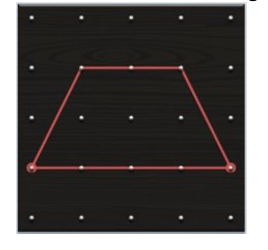
For example, a isosceles trapezoid is displayed for students. The teacher says, “Break apart this shape into three same sized triangles”.
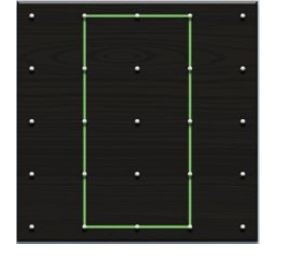
- For example, an irregular shape is displayed for students. The teacher says “What is the fewest number of triangles that will fit this shape?”
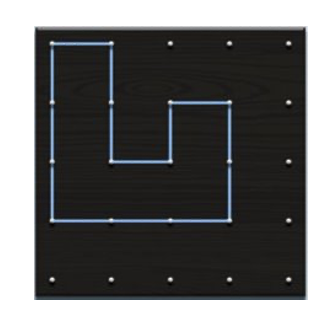
- For example, an irregular shape is displayed for students. The teacher says, “Fill this shape with three rectangles all the same”
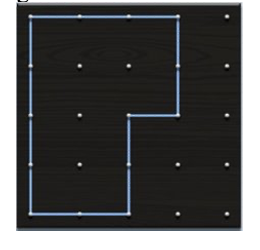
- Teacher provides geometric solid shapes. Students are asked to find objects around the classroom (or school or playground) that look like any one of their wooden solids.
- For example, “What things did you find that were shaped like your wooden figures?,” “What things did you find that were made by people?,” or “What things did you find in nature?”

- Teacher provides geometric solid shapes and pattern blocks that reflect skill deficits (i.e., the student has trouble identifying cylinders in real-world context). Teacher instructs students to pick up the solid figure and say the name. Student repeats the name of the figure and identifies something in the room that looks like the solid figure.
Instructional Tasks
Instructional Task 1 (MTR.7.1)
Place the pictures of real-world objects around your classroom. Photos contain real-world objects that model two and three-dimensional figures. Say to the students, “Look around our classroom at the pictures of real-world objects. In the first column, write the name of the object in the picture. Then list the figures that compose that object and explain your reasoning.-1.jpg)
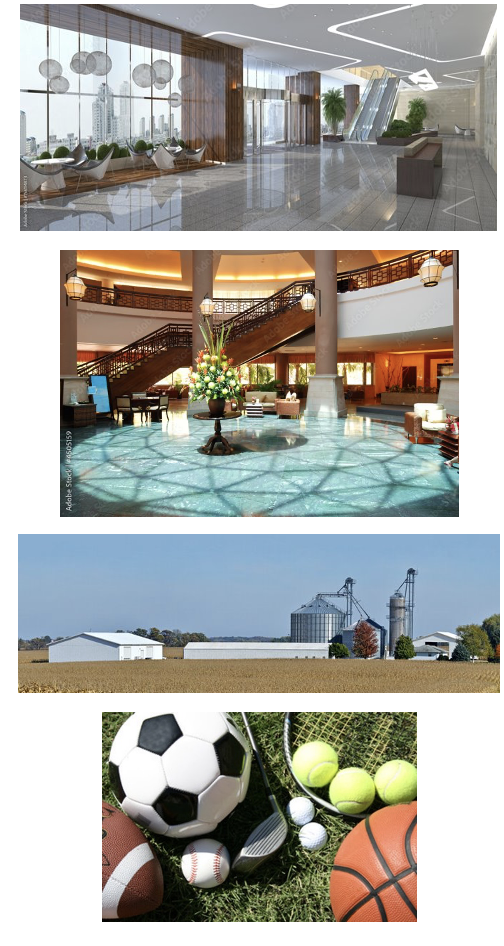
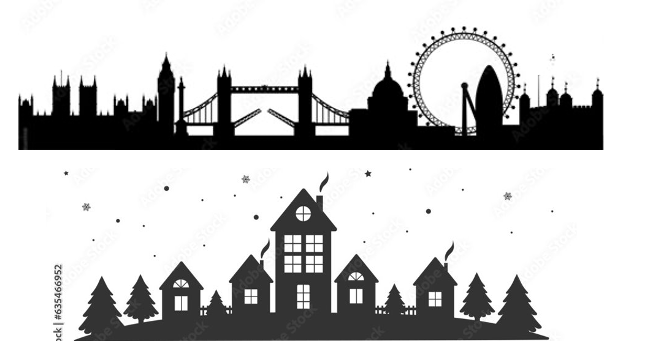
Instructional Items
Instructional Item 1
Combine two three-dimensional figures that would model a real-world object.
Instructional Item 2
What figures have been combined to make this tower?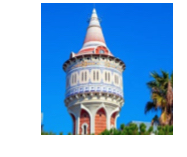
*The strategies, tasks and items included in the B1G-M are examples and should not be considered comprehensive.
